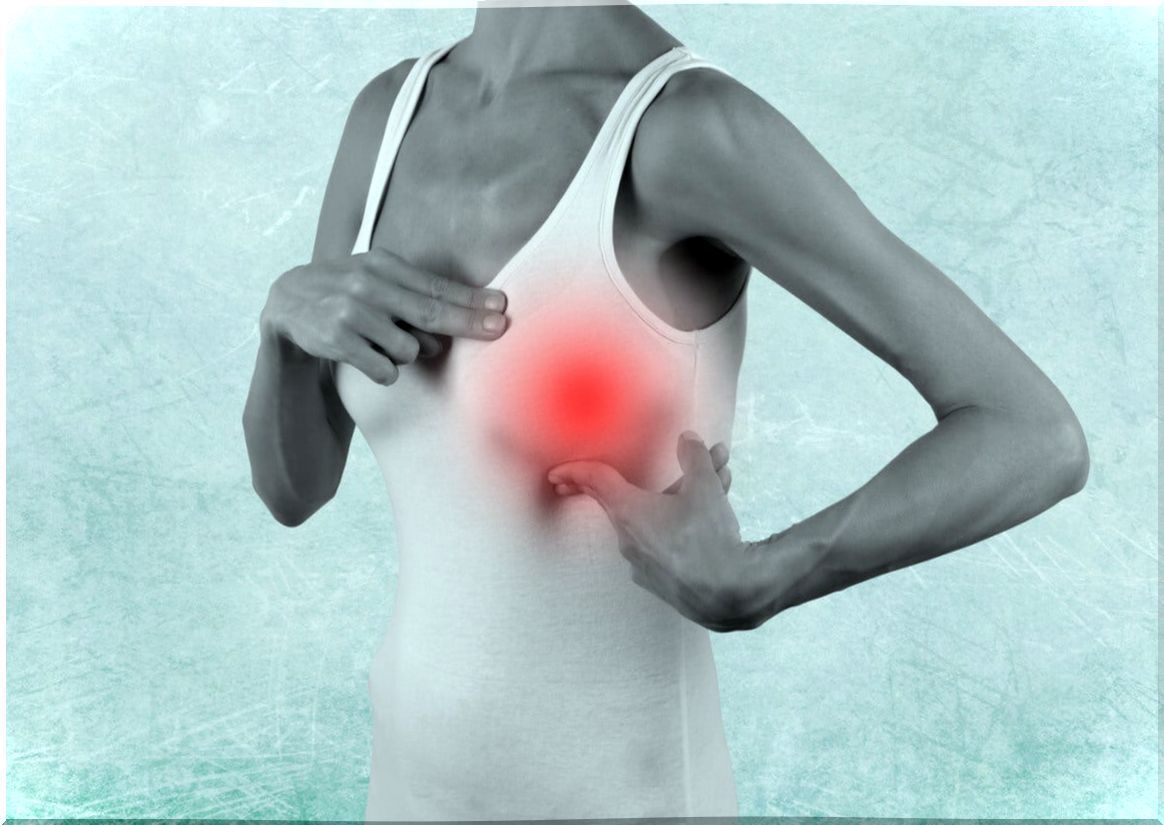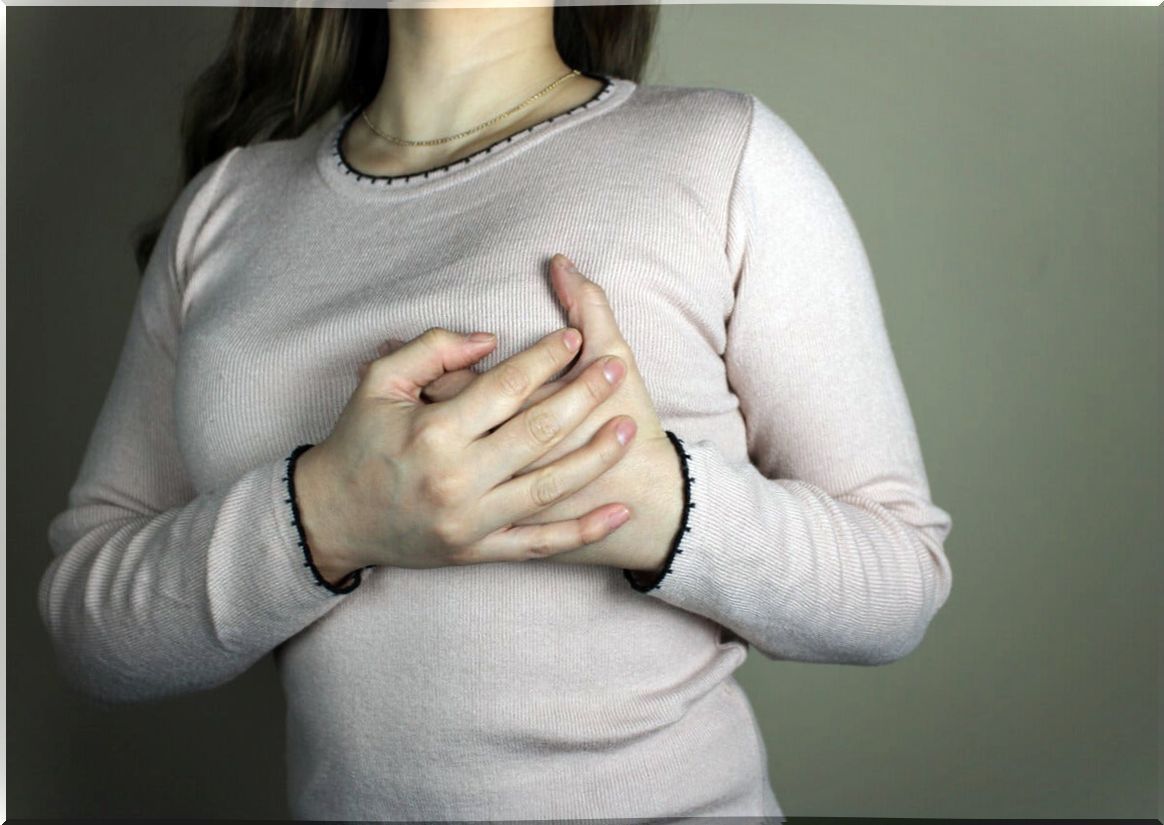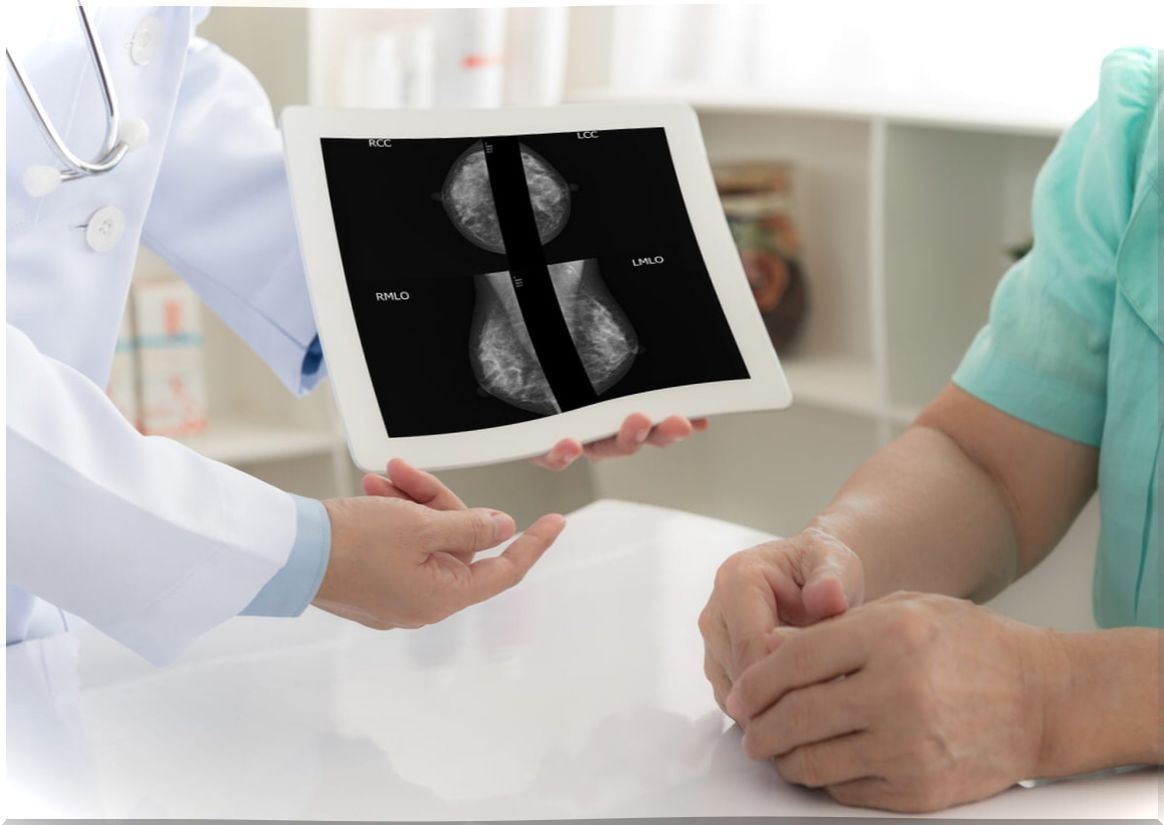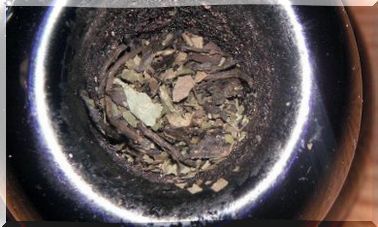Breast Nodules, Why Do They Appear?
Have you ever felt nodules in your breasts? Have you ever wondered why they appear or why they are? Do not be alarmed! Most likely it is a benign disease.

Breast cancer is one of the diseases most feared by women of all ages. Therefore, it is not surprising that some are alarmed when they feel breast lumps or lumps. However, in most cases they are benign. But why do they appear? In the next section we will explain it to you.
First of all, it is important to clarify that the breasts are made up of different types of tissue. In this way, we can find glandular, adipose and connective parts, so it is common to feel lumps or masses without there being any alteration in the breast.
What are breast lumps?
This is a frequent reason for consultation in gynecological consultations, since palpation of them generates intrigue and concern. Breast nodules are deep lesions with a different texture from the surrounding tissue and with a variable diameter.
In addition, this lesion does not present any modification throughout the menstrual cycle and usually generates asymmetry with respect to the contralateral breast. On some occasions, the lumps can be painful and be accompanied by some type of discharge from the nipple.
Many people associate breast lumps with breast cancer. However, studies have shown that in more than 80% of cases they are benign. Many of them can even be generated by hormonal changes resulting from the menstrual cycle or during lactation.

Types of breast lumps
Currently, there are many diseases capable of generating this type of injury to the breasts. However, to facilitate their study, it is convenient to divide them into two groups: benign and malignant.
Benign nodules
Benign breast lumps are those lumps that carry a low risk of developing breast cancer or that are not indicative of the presence of the disease. In this sense, we found a mobile lump on palpation , with defined edges, soft, painful and with few alterations in the skin.
Among the most common causes of this type of injury are the following:
- Alterations associated with menstruation.
- Breast abscesses.
- Fibroadenomas.
- Breast cysts
- Intraductal lipomas and papillomas.
- Ductal ectasia.
Malignant nodules
In most cases, malignant mammary nodules form from benign lesions that have become malignant, thus generating a carcinoma. In this way, on palpation the lump will be hard, with irregular edges, immobile, not painful and with alterations in the skin or in the nipple.
This type of masses are more frequent in women close to 40 years of age and in their presence, various complementary tests should always be carried out for the correct diagnosis. These may include a breast ultrasound, mammogram, or biopsy.
Possible causes of breast lumps
We have mentioned some of the pathologies that can generate this type of injury. However, it is time to delve into the 3 most common causes. All of them require a medical approach.
1. Breast abscesses
This pathology is common in young women who are pregnant or breastfeeding. Breast abscesses manifest as very painful masses with local inflammatory changes. In this way, the area may be red, enlarged, and warm to the touch.
This injury is the product of a bacterial infection and usually begins as mastitis. When it is not treated with antibiotics, a superinfection occurs and purulent fluid accumulates, thus giving rise to the abscess.
Treatment of breast abscesses does not differ from those that appear in other parts of the body. In this sense, depending on its size, the liquid contained in it can be drained. Although they are very painful, their evolution is favorable and usually disappears in a few weeks.
2. Breast cysts
Cysts are the most common cause of breast lumps. In fact, it is estimated that 90% of women present them. This type of malformation is common in young people between 20 and 40 years old. Although its cause is not well determined, there would be a hormonal influence.
They are accumulations of liquids contained in a capsule of soft consistency, mobile, variable size and that can become bilateral. Unlike breast abscesses, the fluid will not be infected, so there will be no inflammatory changes.
Some breast cysts can be painful and cause breast pain during menstruation. Although there are no studies that link this alteration with the risk of breast cancer, it is advisable to carry out a constant check-up of them.
Currently, there is no specific treatment for this injury. If they cause a lot of discomfort or are large, the specialist may recommend draining them, but there is a risk that they will appear again.
3. Fibroadenoma
Fibroadenoma is a benign breast lump, which forms when the mammary gland grows irregularly. It is often mistaken for a malignant nodule as it is hard, painless, mobile, and can grow over time.
3 types of fibroadenomas are described: simple, complex and giant. The former are those tumors smaller than 5 centimeters in which all the cells that constitute it have similar characteristics. That is, there is no risk of malignancy.
For their part, complex fibroadenomas have a certain degree of cellular atypia, that is, the cells began to vary among themselves. However, according to the American Cancer Society, the risk of developing carcinoma from this breast tumor does not increase significantly.
Finally, the giants are those that exceed 5 centimeters in diameter. In most cases, this type of mass disappears over time. It will only be necessary constant monitoring to detect if any change in size occurs.
In extreme cases, when it is excessively bothersome or large, a surgical removal can be performed. However, like breast cysts, they can come back.

Recommendations in the presence of a mammary nodule
As you can see, feeling a lump in the breast is not synonymous with cancer. Most likely it is a benign tumor that does not represent any risk to life. However, it is important to go to the doctor and perform all the corresponding tests to have an accurate diagnosis.
In addition, all women should have a breast self-exam at least once a month. This will be the only way to know the anatomy of the breasts and thus be able to detect any abnormalities in time.









